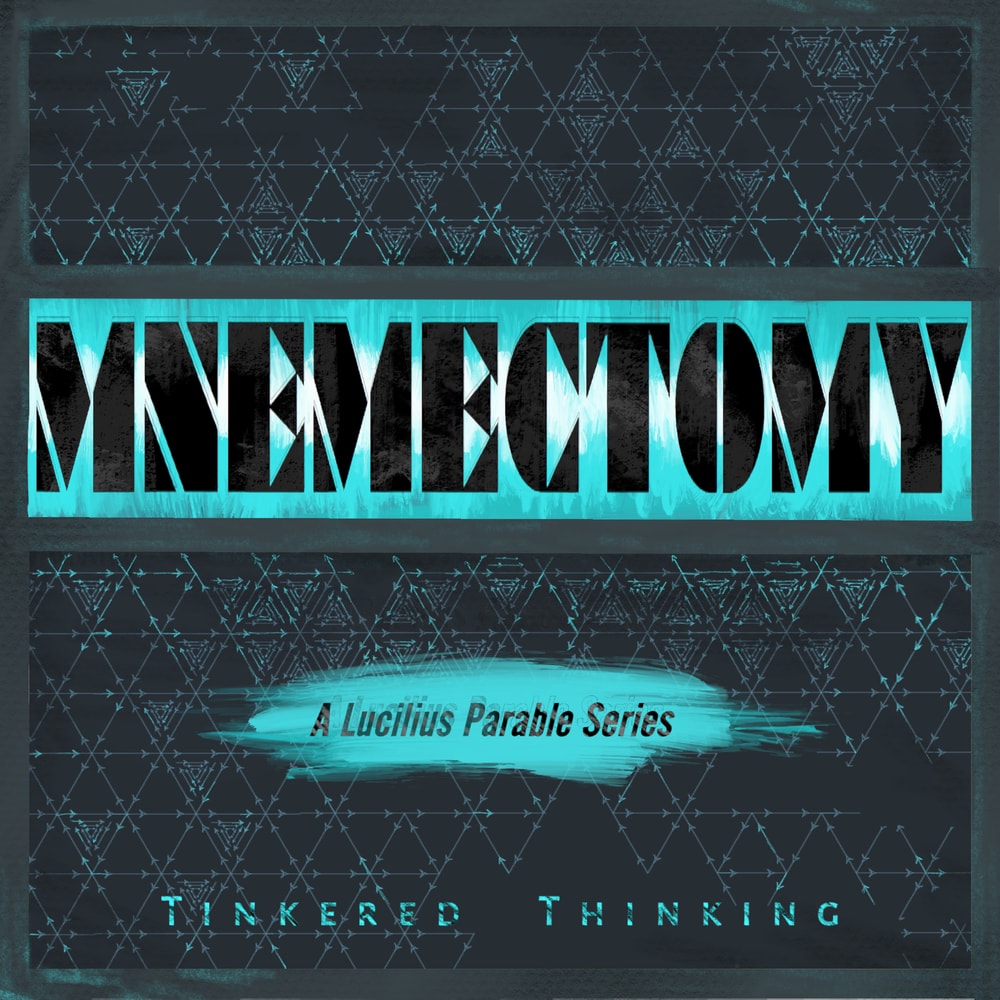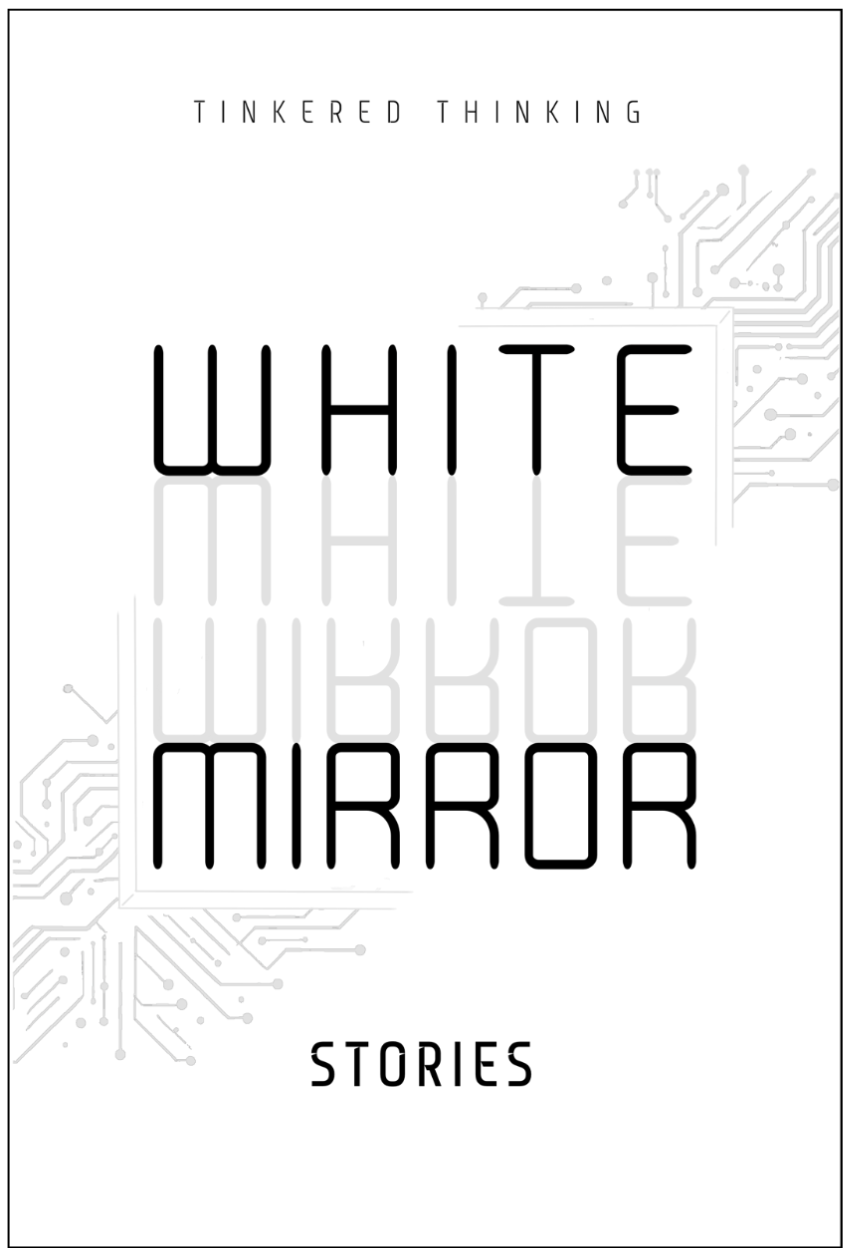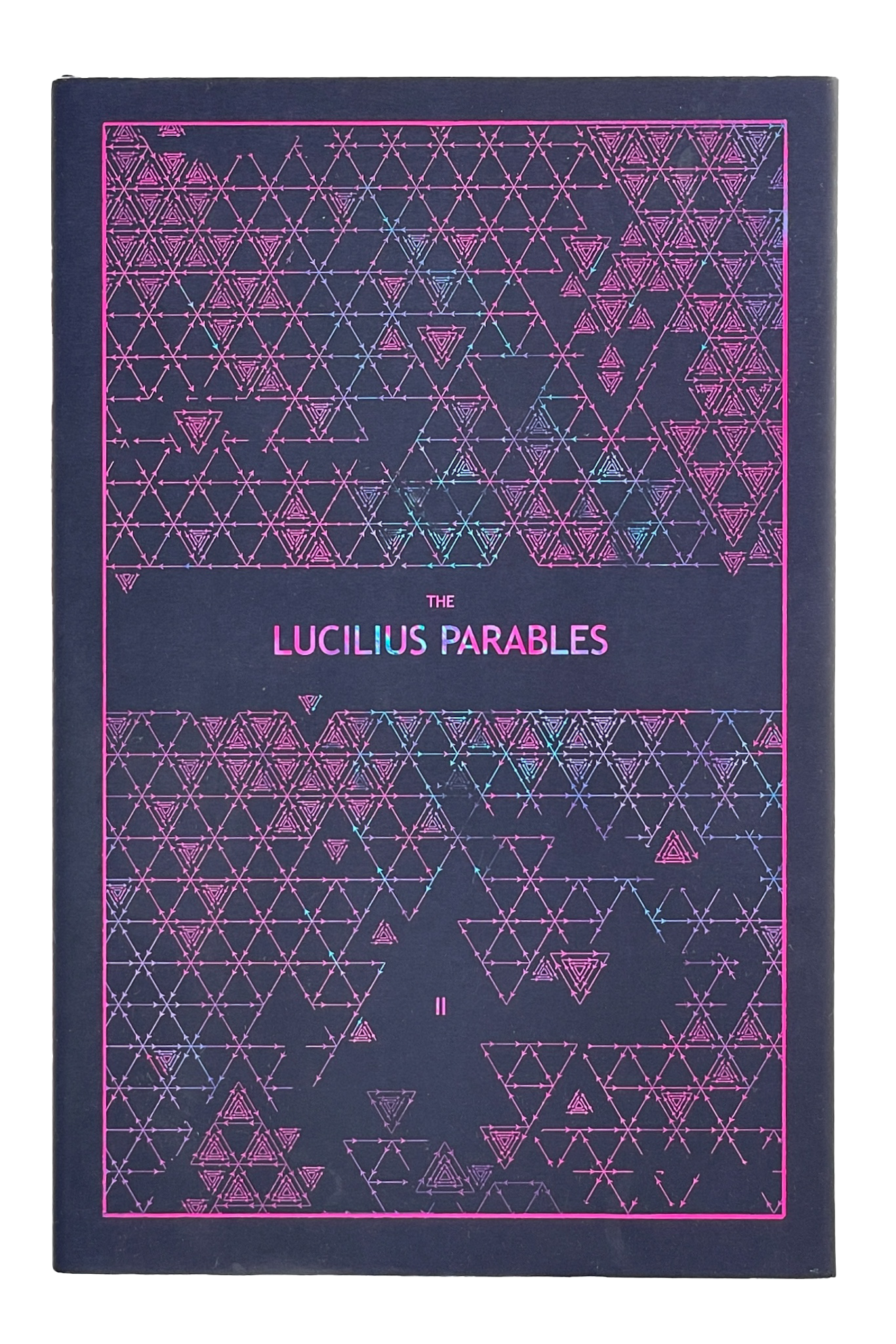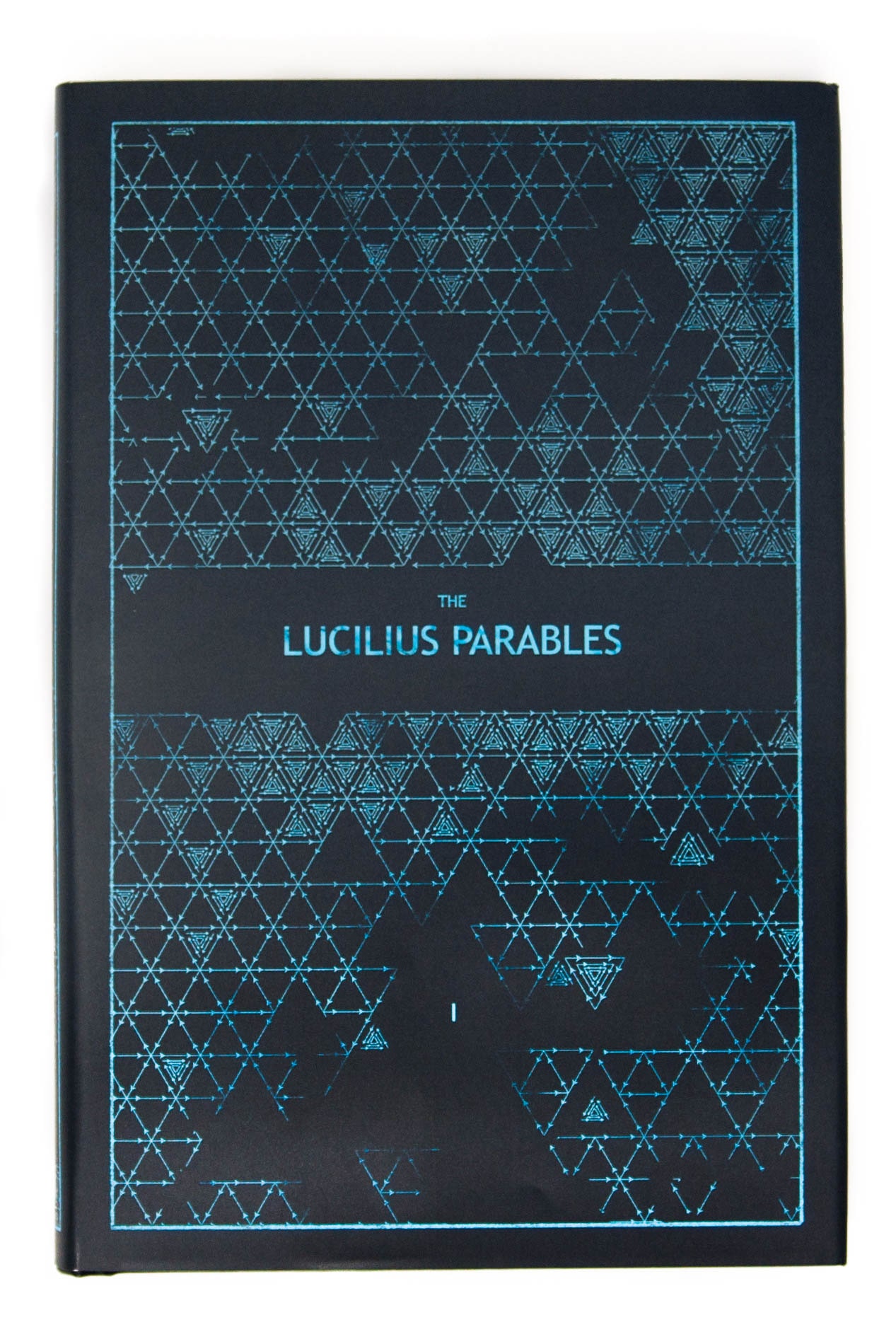Daily, snackable writings to spur changes in thinking.
Building a blueprint for a better brain by tinkering with the code.
subscribe
rss Feeds
SPIN CHESS
A Chess app from Tinkered Thinking featuring a variant of chess that bridges all skill levels!
REPAUSE
A meditation app is forthcoming. Stay Tuned.
RESTART/REBUILD
September 17th, 2022
Recently someone pointed out that an experienced and skilled artist can toss a drawing away and start over with little thought or concern. Amateurs will toil away at something that can never get much better because they don’t have much to show for. They try to improve what little they have, failing to realize that it’s more efficient to just start over. The master draftsman isn’t so unattached because of a sizable cannon of work, but simply because it’s just faster to start over in order to get somewhere good.
This has happened countless times here on Tinkered Thinking, both with Lucilius Parables and regular entries. This very entry started off three different ways, with three different titles, and while one of those false starts was saved for perhaps another day, the other one is already lost from memory. This isn’t to imply some sort of mastery over writing, but after a thousand and some odd essays and stories, the psychological experience is far… lighter, casual, and playful. Writing can be serious business ( always too serious if even just a little serious, in this writer’s honest opinion ) But as soon as all that cramped spirit released, words have a much easier time coming to mind.
But the technique or advice can be imported. Currently a little chess app is in the works and just today I rebuilt it twice, tackling different aspects of functionality as I wiggle my way around a tech stack that I’m not all that familiar with. While I’m making good progress with the latest iteration, I already have plans to start anew tomorrow. None of this is all that repetitive, it’s more as though you’d built a blossom before the leaves and done so without stem and seed. Rebuilding isn’t so much a total restart as it is an iterative cumulation - the same way we might race through and obstacle course over and over, each time figuring out some aspect of the course that can improve performance on the next run.
Perhaps the most approachable example is when we stutter to start on some point, as the mind rewrites our opening sentence as we say it. It’s hard to think no one hasn’t had this experience: we get half way through our first sentence and the mere hearing of that sentence gives us a better idea about how to go about our description or argument, and so it necessitates starting over.
All of this boils down to a priority of moving, especially when stuck. Without the ability to abandon some nascent effort and restart, getting stuck can be a serious waste of time. And the time it takes to succeed is always good to cut down. As counter-intuitive as it might seem, starting over is often quicker…
QUESTIONS & CONVERSATIONAL CONSTRAINTS
September 16th, 2022
It can be incredibly difficult to get someone to see things from your point of view. Often it feels as though no one is listening. But there’s a problem with this feeling: it’s based on a lack of evidence, an no evidence is not proof that something doesn’t exit. It’s just proof that the evidence currently isn’t visible.
What’s often happening is that we are heard, but instead of confirming this, our listener is too busy trying to push their own perspective because they are in the same boat - they feel as though they have not been understood.
We keep heaping our own point of view on others. Everyone struggles with this.
The key and hack to good conversation is in the questions we ask, not the descriptions and arguments we give.
When stuck at an impasse in conversation today, I felt the urge to rephrase what I’d already said, but a thoughtful moment made me realize that I was just repeating myself. So I switched it up, and wondered: how could a I force a response about the direction I was thinking in? The question I ended up asking was:
Given what you understand about my situation and my goals, if you had to adhere to those parameters as if you also really wanted them, what would your advice be for moving forward?
This got the thoughtful pause in my conversation partner that I was looking for. And the initial response was telling.
Hmm. You’ve forced me to give up my perspective and my agenda and take on yours as a kind of creative constraint….
Exactly. Isn’t this in large part what most people are looking for in many conversations? Isn’t this the framing through which we often hope to be spoken to? Put on my shoes for a moment. Look through my eyes. Wear my dreams and shroud yourself with my problems. Do you see something here that I don’t? How would you navigate forward?
Raw description does little to steer the mind of others. Argument and description function like the walls of a structure. Questions are the thresholds, the doors and portals that welcome a listener to venture in and explore. And notice the difference in agency allotted our partner in conversation: our partner takes no part in building the argument we give, but a good question requires both people to properly function. The listener is not just granted agency in terms of supplying a response, the listener is challenged to do so.
As it turns out, the advice my partner in conversation ended up giving me was exactly what Was doing.
Previous to my pivot with the question it had seemed like we were in total disagreement, but as it turned out, we were on the same page.
THE FUN ROUTE
September 15th, 2022
Given any new endeavor, any new project or skill to learn, the path forward is often unsure - unknown. And yet, without fail, we try to imagine one. Vaguely and somehow specifically there’s a sense of how it should go. It’s exactly at that point - before even starting - that trouble begins to arise.
Rare is the person who is going to actively imagine a dozen different paths to the same outcome, but in reality, there’s an infinite number of ways to arrive at a given destination, be it a real physical one, or figurative. What differentiates people is how we navigate - toward the first step and from step to step. Instead of taking things one step at a time, the cognitive e convention seems to be to imagine the entire arc of progress, but how we navigate from one small step to the next determines exactly how and if we make it to our desired destination.
The matter of taking one small step towards achievement is a matter of the Optimal Challenge. It’s a bit like the Goldilocks story, but instead of bed sizes and porridge temperatures, it’s a measure of difficulty: Not too difficult or you’ll get frustrated, not too easy or it’ll be boring. And then there’s one more component to the optimal challenge and exactly which optimal challenge to pick: does the result of overcoming the challenge inspire further motivation?
Some challenges are an end unto themselves. Once surmounted we slump back in exhaustion and call it a night. Other challenges, however, produce a result that seems to have the opposite effect: we lean in with more energy, we keep working, and whoops, accidentally pull an all-nighter. As much as staying up all night is not recommended, these are some of the best times - when the flow state seems on another level of longevity, when the marathon session feels like flying.
These experiences hold keys for understanding the mechanics of our own personal navigation when it comes to novel projects and learning new skills.
A practical example might help: I’m currently sprinting on a small project. A few days ago, an entry about Flip Chess was posted. And after some encouragement from a good friend, I’ve decided to whip up an app for the chess variant. But for this project, I’m using a tech stack that I’m not terribly familiar with. So what exactly should I do? The first day I sort of languished on all sorts of tutorials, feeling out exactly how to do what I wanted to do. By the end of the day I was tired and honestly doubting whether the project was even worth undertaking. But at that point I had a thought: just get a chessboard on the screen. That should be easy. And so 20 minutes later I’d pulled a library, plugged it into my bare-bones set up and voila, I at least had a chessboard to look at. But, I’m a bit picky about how things should look. It was at this point I remember having a little conversation with myself. I reasoned that I shouldn’t do anything aesthetic because that’s not how a good friend of mine would do it. I should get the guts of the application working, and then worry about aesthetics. But that’s when I realized all this that I’ve been writing about. That’s now how my navigation system for motivation and the unknown functions. Having a uniquely colored board in the style I imagine - I realized - would make me more motivated to tackle the trickier stuff that I was feeling daunted about. So an hour or so later, I had what felt like a very slick looking chessboard - and because of it, I was excited to do more, to make it live, to get the guts of the application working so I could see my chosen aesthetics actually function.
So to circle back: it seems that when people think about how the path through the unknown should look, we are trying to imagine the correct way, when it’s actually more practical to ask: what is the funnest way to go about this?
SOLICITING ADVICE
September 14th, 2022
Advice can be a difficult object to parse. First off, no one is you. All the flowery stuff about being unique is, well - true. While there might be many people living a similar life, or people who have lived similar experiences, the differences between very similar lives are still vast. Advice that one person would have loved to hear when they were in your current predicament might not really apply to you, even if the situation is quite similar.
There’s also the issue of bad advice. Much advice is likely just that: bad. Either because someone doesn’t know what they’re talking about or because the advice just doesn’t apply to you aren your situation. It’s a bit like using an instruction manual for a prop airplane engine in order to fix a car engine. Sure there’s similarities in how both work, but the devil is in the details. Heck, even car engines can vary enough that an instruction manual for one doesn’t easily translate to another. Especially if it’s your first time trying to do something with these engines.
Much of the advice we hunt for is likely just due to a social impulse. It feels good to talk about our predicaments, and it feels like being loved when someone cares enough to listen and then say something constructive.
All of this is also a form of procrastination.
No matter the mentor or master, there is one source of advice that supersedes them all: reality. But how, of course, do we ask reality for some advice? Luckily reality is ruthless and honest beyond all people we might talk to. The trick is knowing how to ask for the advice. We might ask a friend and a mentor Do you think this is a good business idea? And that friend or mentor might have some interesting things to say, but reality carries a far better answer, and the way to ask reality is to actually go ahead and try it out - the business idea, that is.. Reality will give the final word of advice on whether it’s a good idea or a bad one. Reality’s advice is sought through experiments. And this is why it’s good to try and test ideas in iterative increments as opposed to toiling away on a grand plan for years and years without any real feedback from reality. Launch the smallest possible version of the idea with the minimum of effort and time and… see what reality says.
ENTERTAINING NONSENSE
September 13th, 2022
Taking nonsense seriously is a serious problem while trying to make sense of the world. But entertaining nonsense is a vital skill because of how it changes our relationship to the unknown.
Is there much of a difference between taking a concept seriously and entertaining that concept? Certainly the seriousness of taking something seriously indicates it’s a bit further along on the spectrum of seriousness when compared to mere entertaining:
It’s one thing to invite someone in and entertain a guest. It’s quite another to invite that guest to move in.
Many people suffer from simply being too serious. And the caution warning on life’s prescription bottle would likely indicate that taking everything too seriously is likely to result in the adverse effect of taking nonsense seriously when such delight should only be merely entertained.
A serious person might claim that nonsense should not be considered at all. But being so serious, a serious person cannot seriously entertain the possibility that such serious discrimination might hamstring the ability to discriminate! How is one who only considered things seriously supposed to consider whether something is nonsense or not? Well, our serious fellow is caught in the hinge and teeth of a serious problem. Consideration of nonsense mistaken as something that is not nonsense means said nonsense must be seriously considered.
Hence the need to entertain nonsense. Is this guest merely a fool who makes me laugh, or is this a zen master of sorts making fun of me and itself?
Entertaining nonsense means combing through a lot more of the content of life. But not as an arduous task, but a pleasurable one, like feasting ones eyes on a beautiful vista, taking in more and more because all the details add to the beauty.
But most importantly, the mental demeanor that comes with an ability to entertain nonsense translates to the way we shake hands with the unknown.
Traditionally the scariest thing to humanity, the unknown is home to both delightful surprise and crushing disappointment. All manner of unexpected lies beyond its front door. And those too serious to entertain nonsense have far more trouble knocking for entry than those who keep their souls fresh with a little nonsense.
-compressed.jpg)





